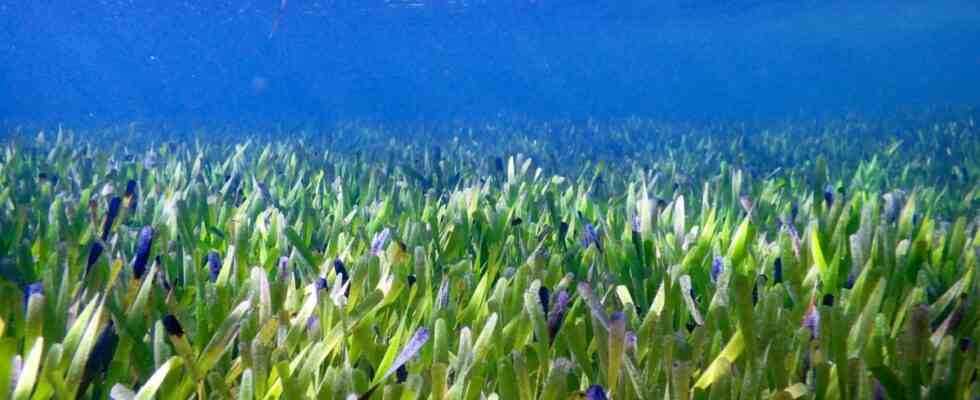The researchers at the University of Western Australia actually wanted to find out how genetically diverse the seagrass meadow in Shark Bay in western Australia is. The result surprised the team, however, because during their investigation, they happened to come across the world’s largest plant.
A huge seagrass carpet of the species Posidonia australis stretches 180 kilometers in length in the UNESCO World Heritage protected Shark Bay. In total, this “meadow” covers an area of 200 square kilometers. This carpet should be viewed as a single plant, writes the team led by evolutionary biologist Elizabeth A. Sinclair from the University of Western Australia in the journal Proceedings of the Royal Society B.
The study was actually planned to find plants that could be used for seagrass reclamation. “We’re often asked how many different plants grow in seagrass beds, and this time we used genetic tools to answer that,” says Sinclair. The researchers were “blown away” by the results, says Jane Edgeloe, who was involved in the study. Because all samples were genetically identical, the huge carpet of seagrass is a plant. The large seagrass field is said to have emerged from a “colonizing seedling” and to have spread further and further over the years.
The plant not only sets a size record, it is also unusual in other respects
Because of its massive size, researchers estimate that the plant must be around 4,500 years old. Aside from the size record, the plant is also special because it is polyploid. This means that the seaweed has more than two sets of chromosomes in its cells. This phenomenon occurs when two diploid parent plants – plants with two pairs of chromosomes in the cell nucleus – cross with each other. The newly created seedling takes over the entire genetic material from both parents.
“Polyploid plants tend to live in places with extreme environmental conditions and are often sterile, but they can continue to grow if not disturbed,” says Sinclair. So far, the plant has proven to be very resilient to the extreme environmental conditions in Shark Bay. “Even without successful flowering and seed production, the plant appears to be very resilient because it tolerates a wide range of temperatures, salinity, and extreme light conditions. This would be a major strain for most plants,” says Sinclair. Further studies should show how the seagrass copes with the existing environmental conditions.
With its size, the huge seagrass meadow is far behind the largest plant in the world that has been recorded so far. This is a clone colony of 47,000 aspens in the state of Utah, USA called “Pando”, which was discovered in 2018. The network of aspens is connected to the roots in the ground. In total, “Pando” is 43 hectares in size and would therefore fit into the area of the Australian seagrass meadow more than 465 times.

